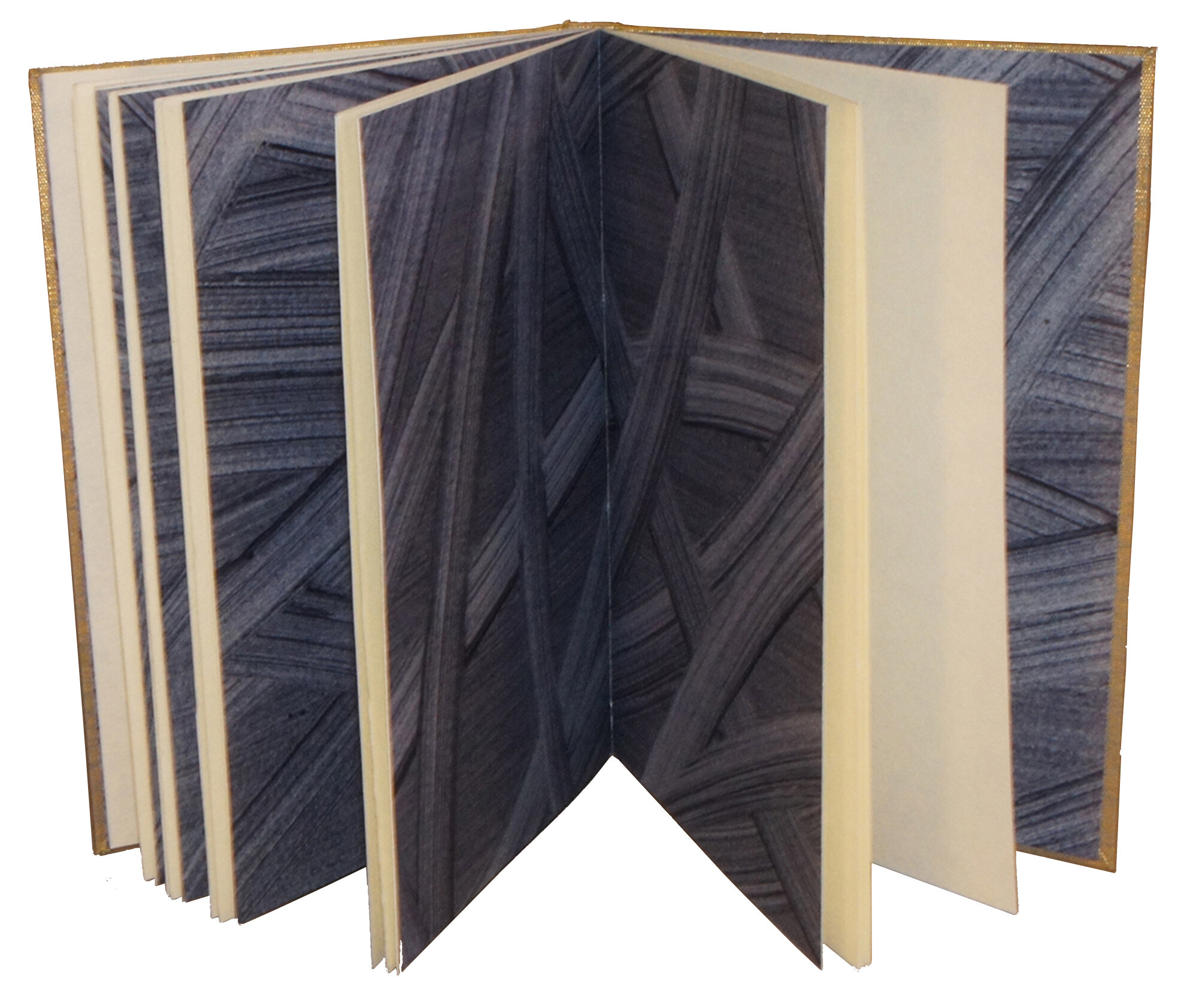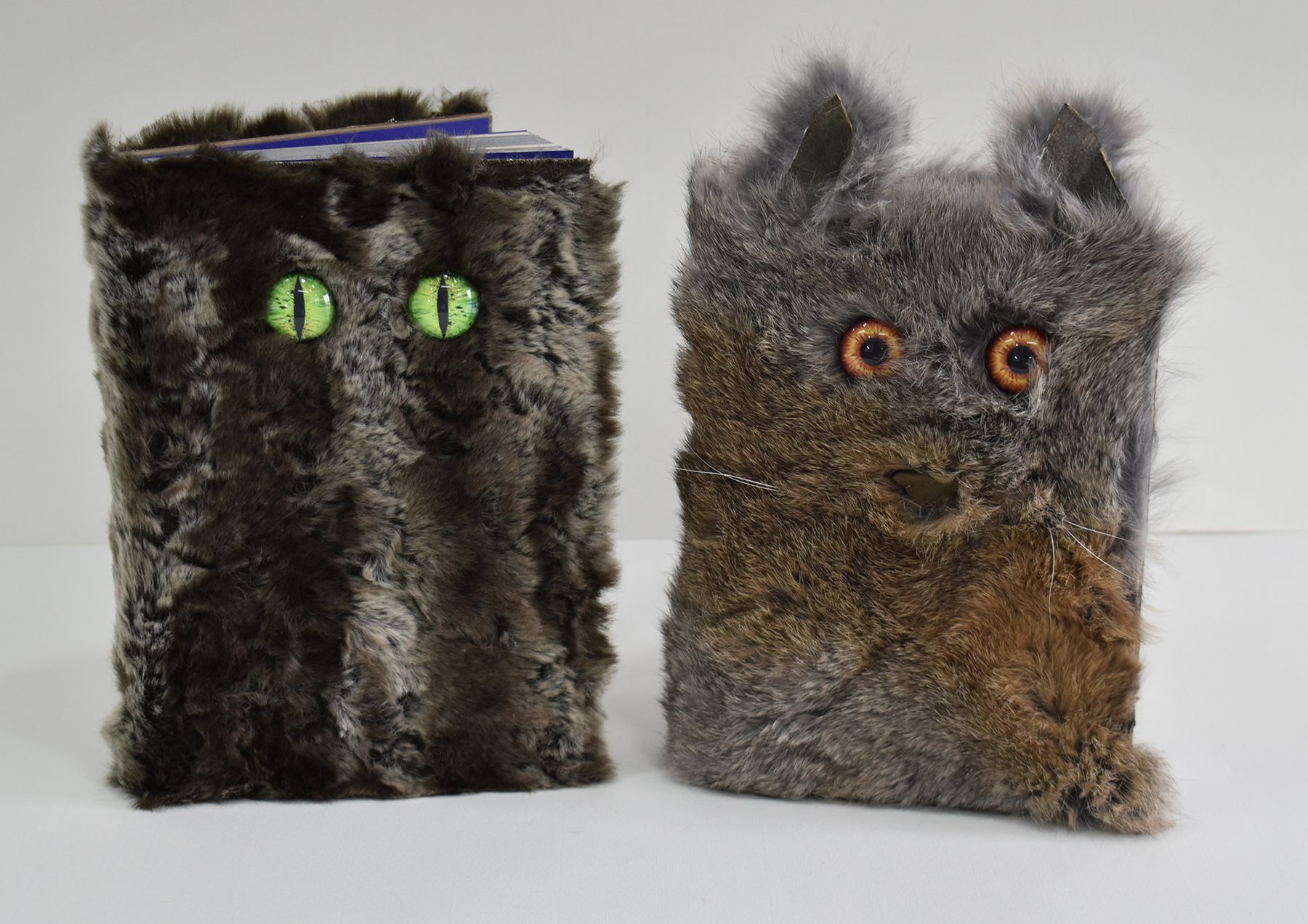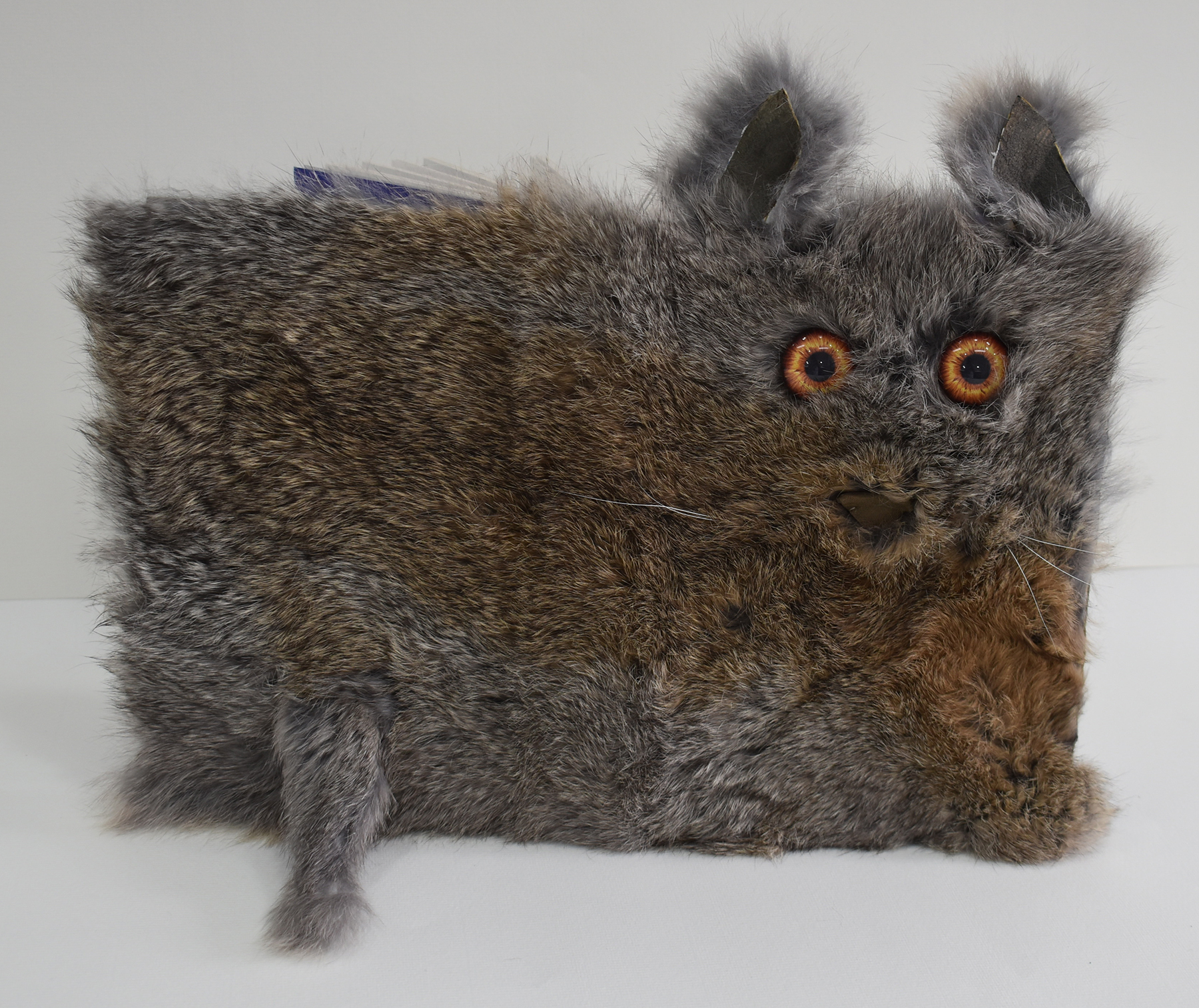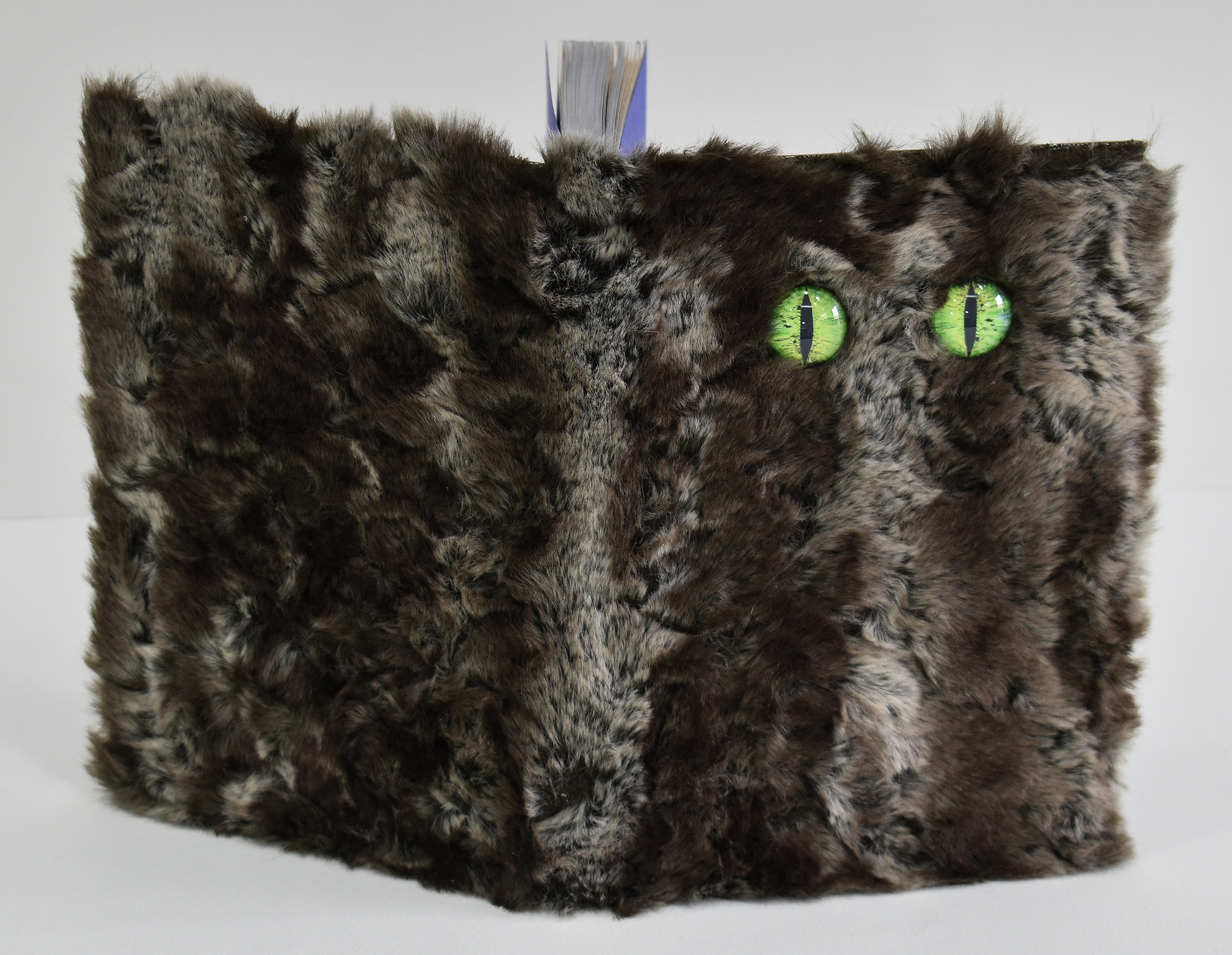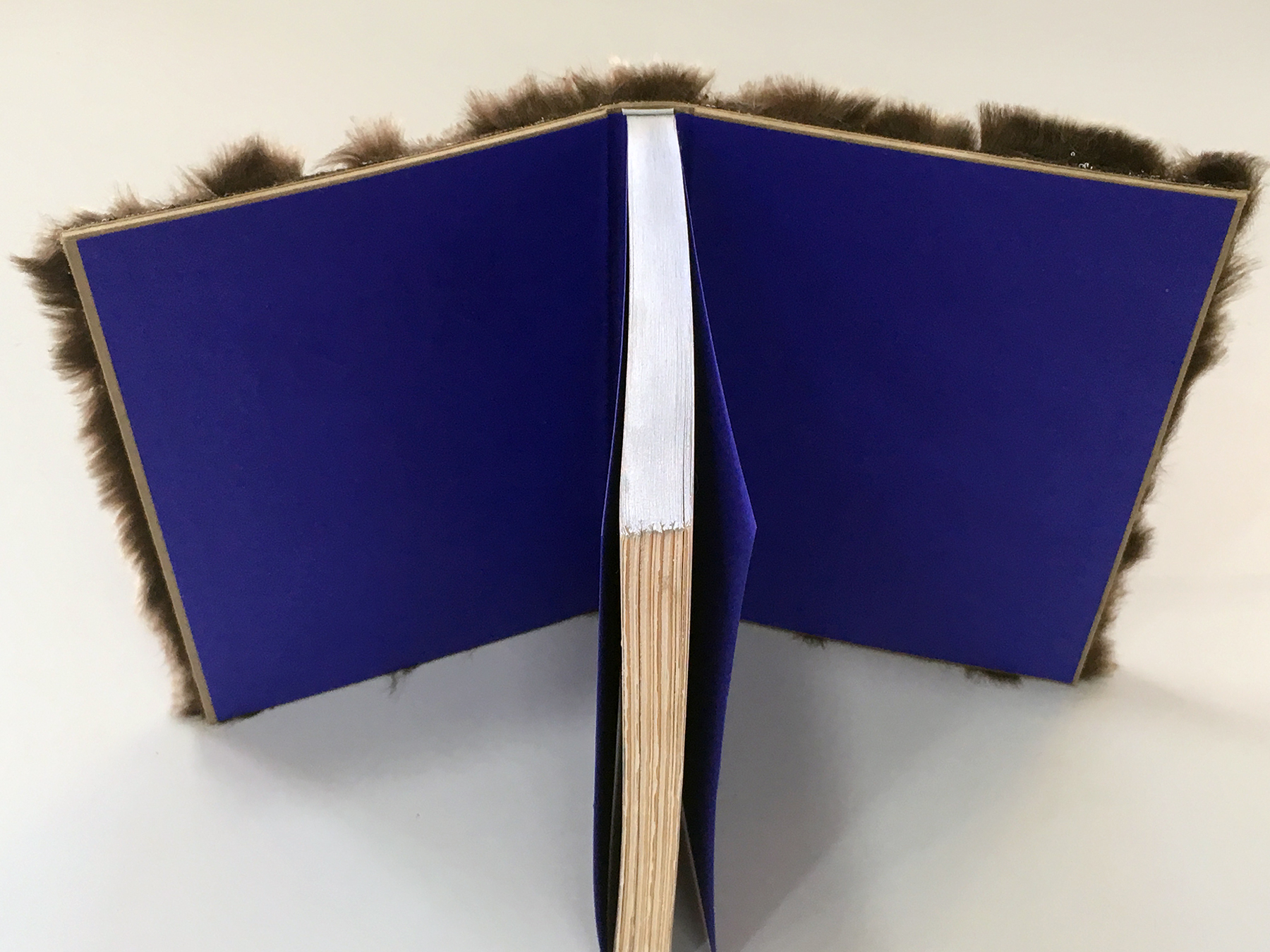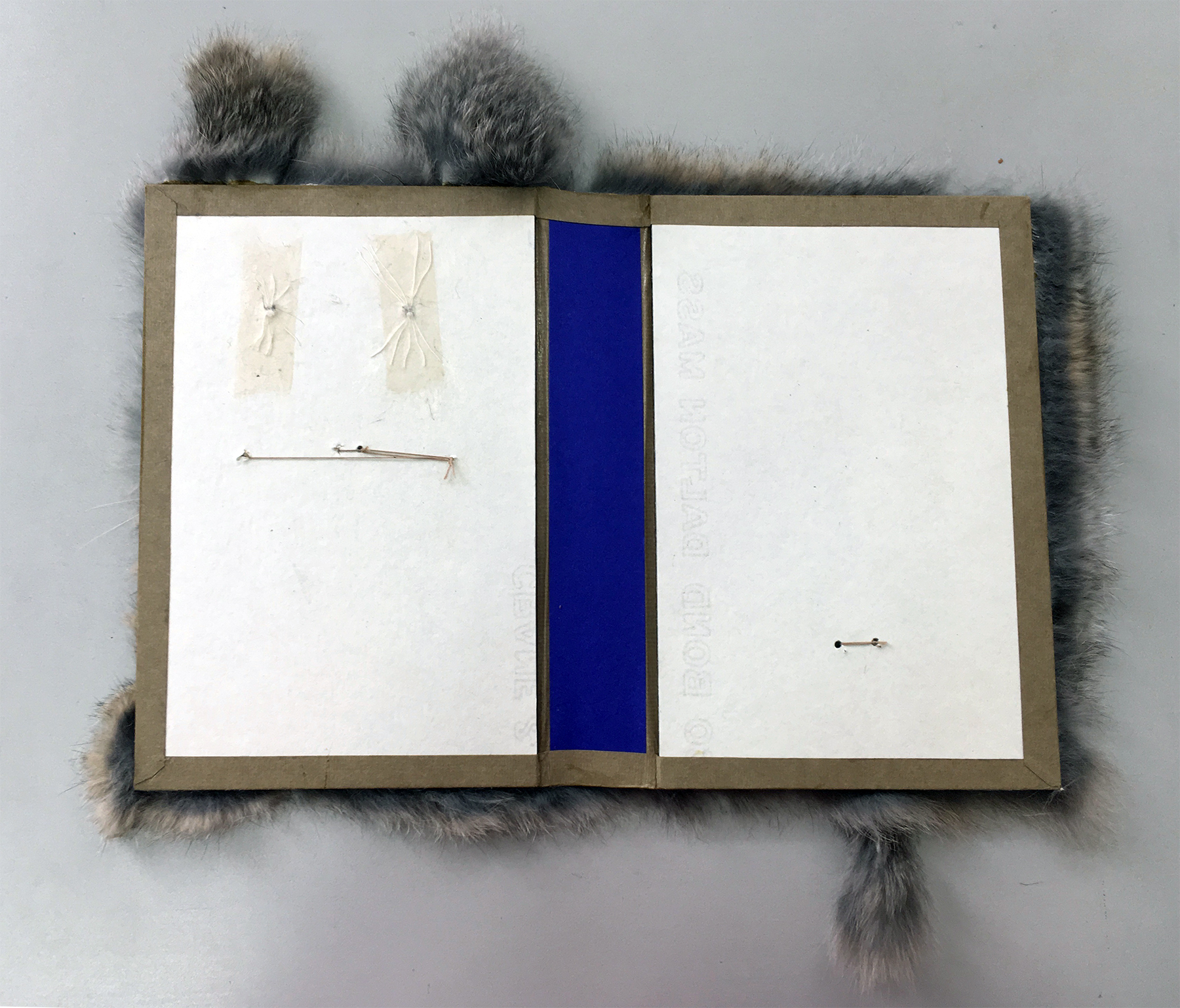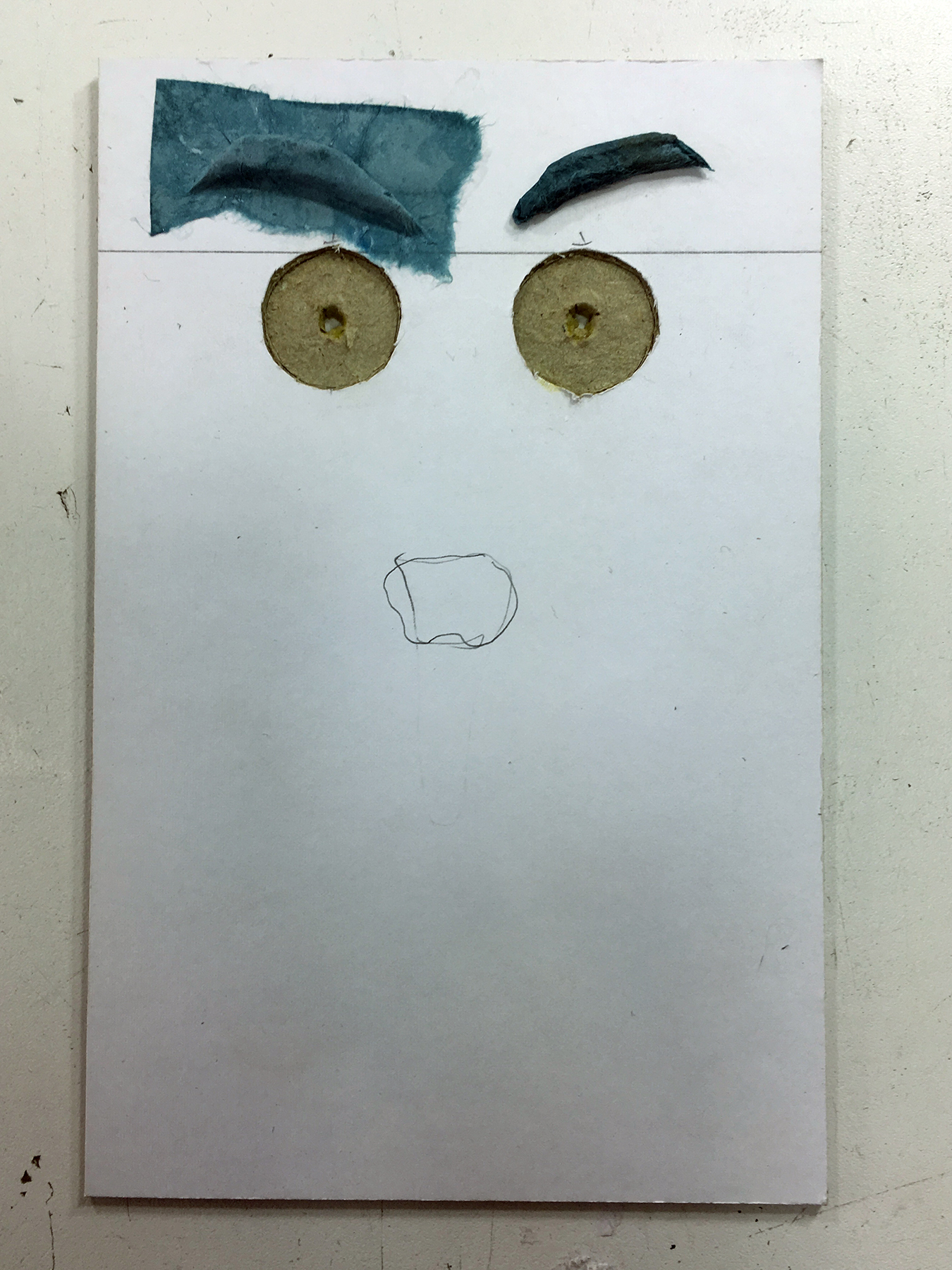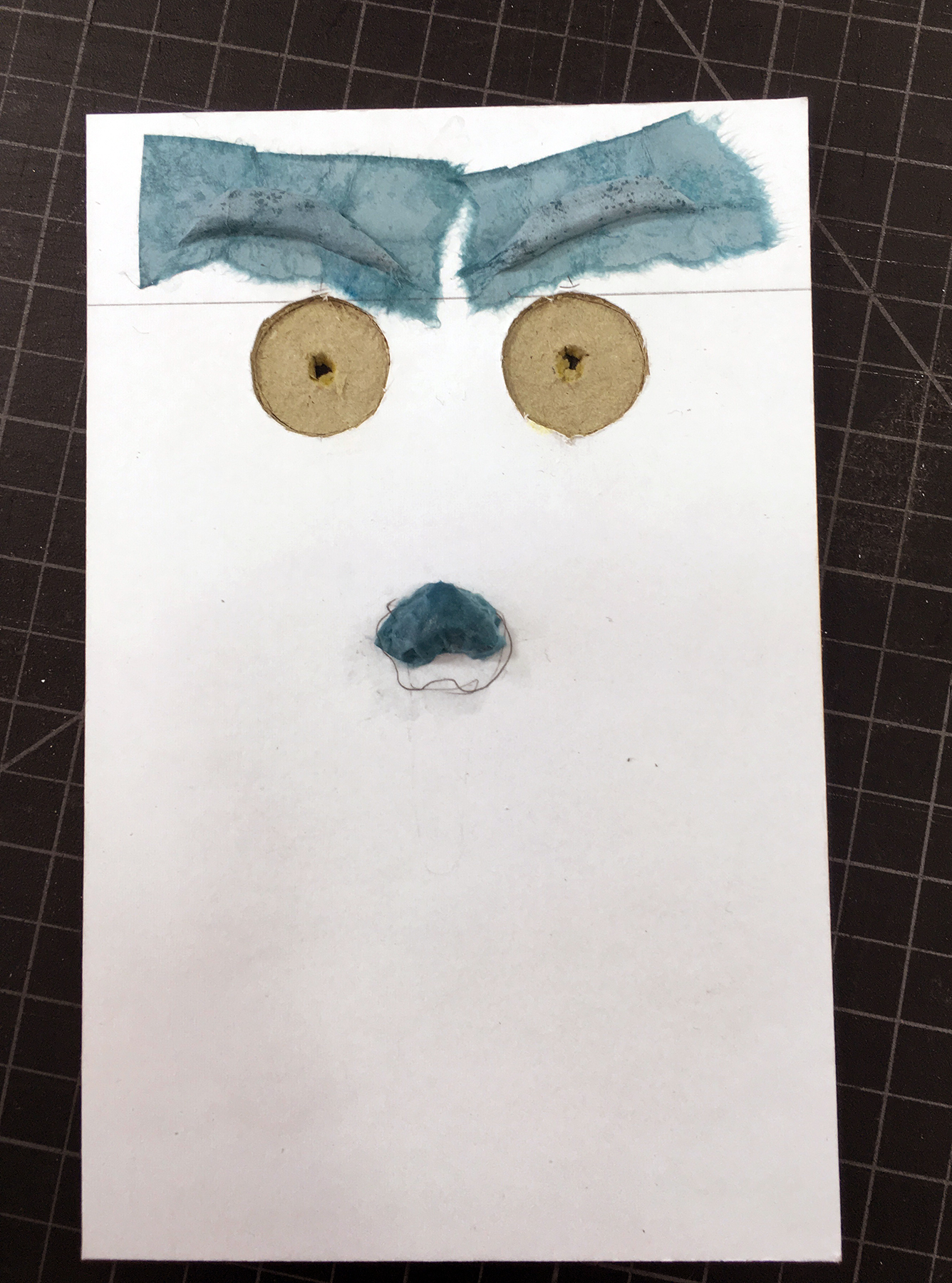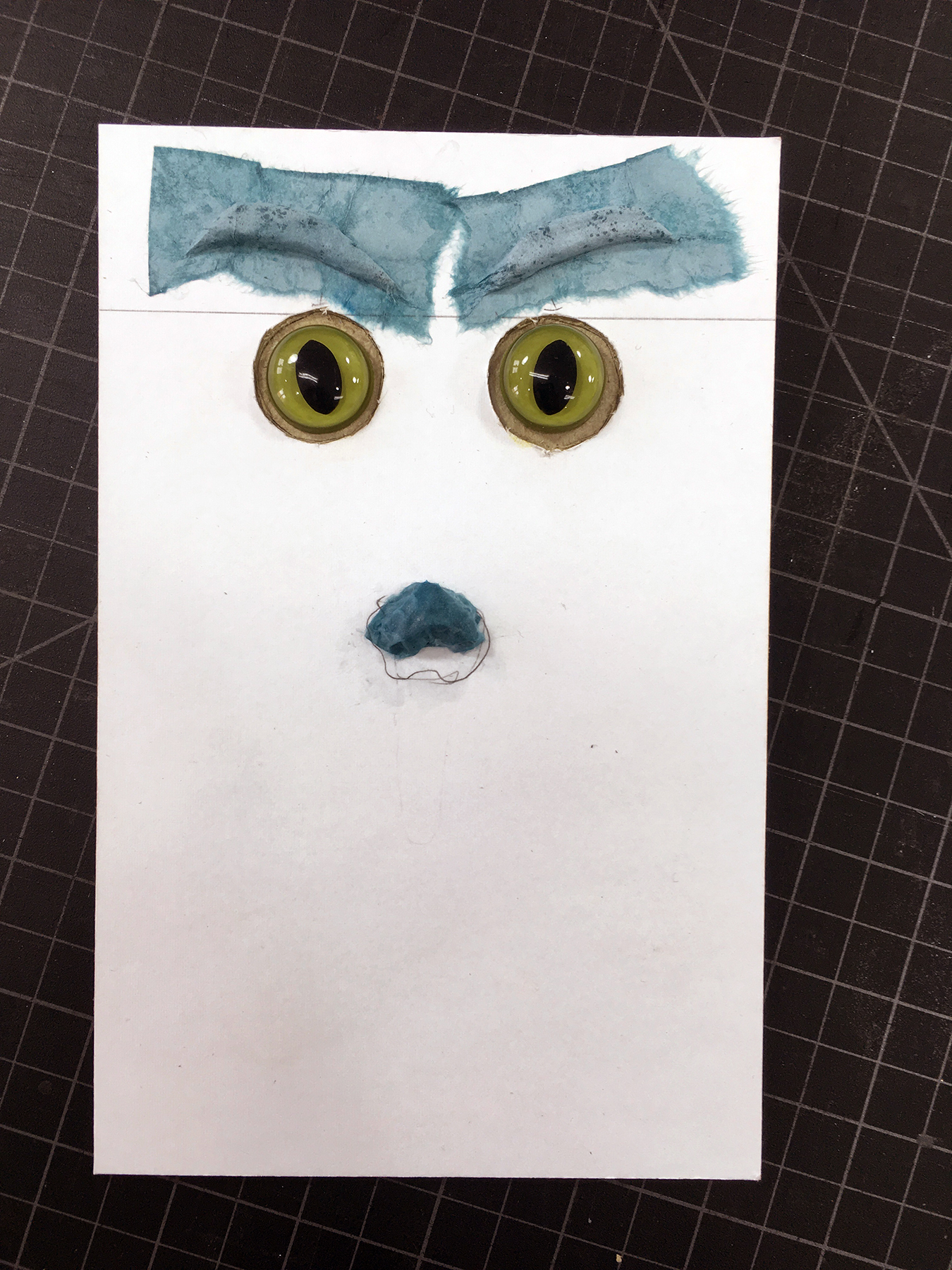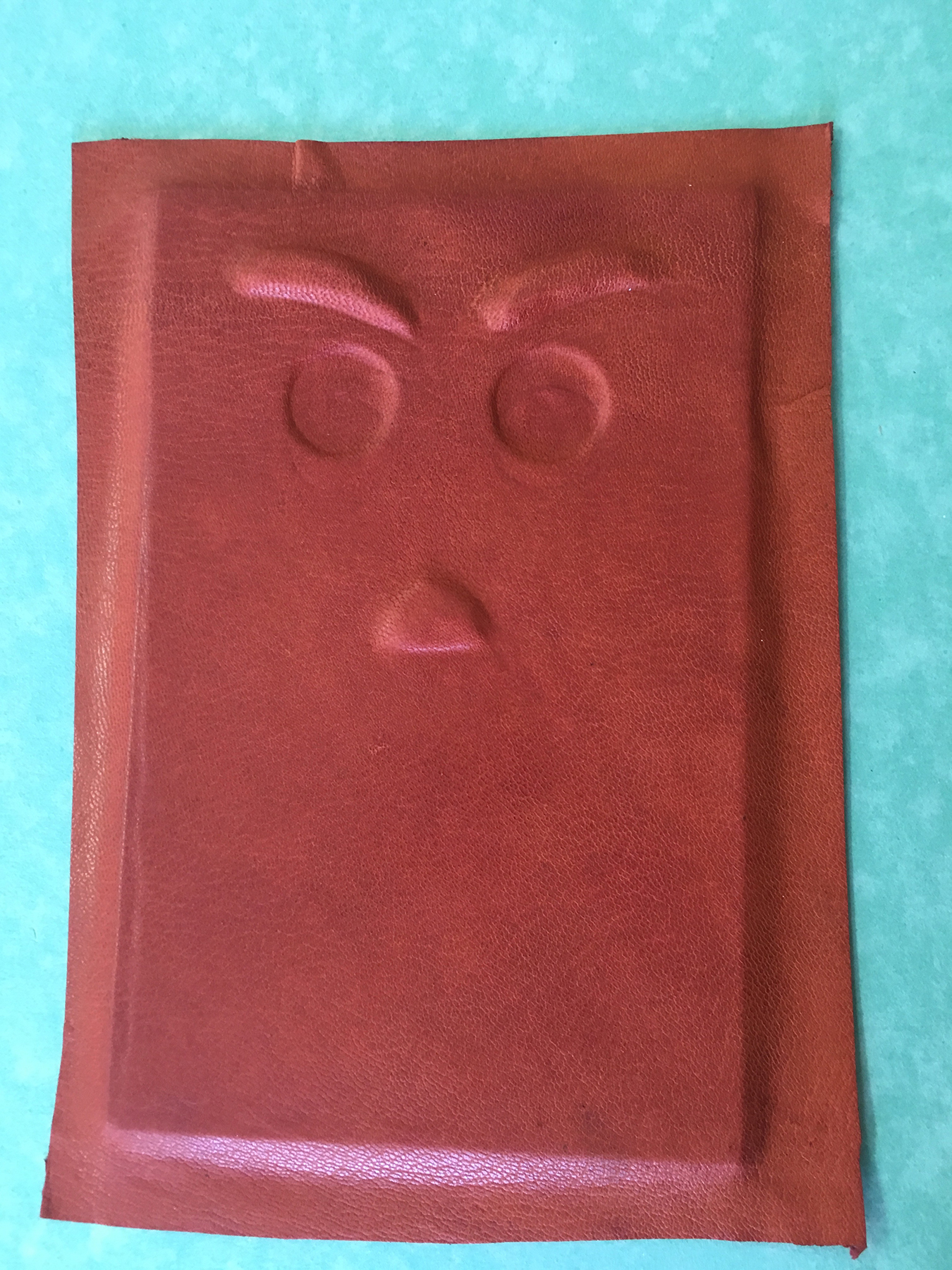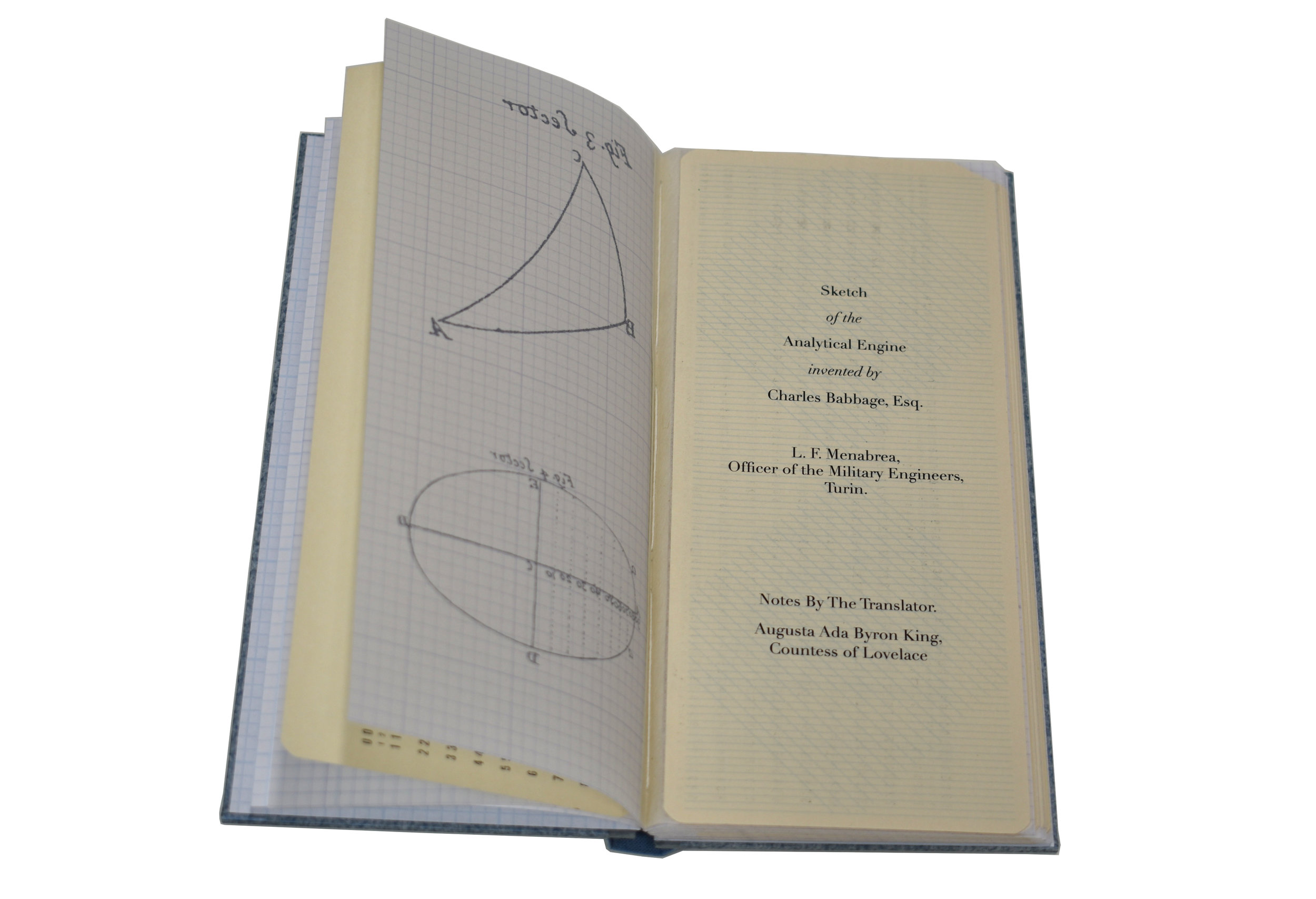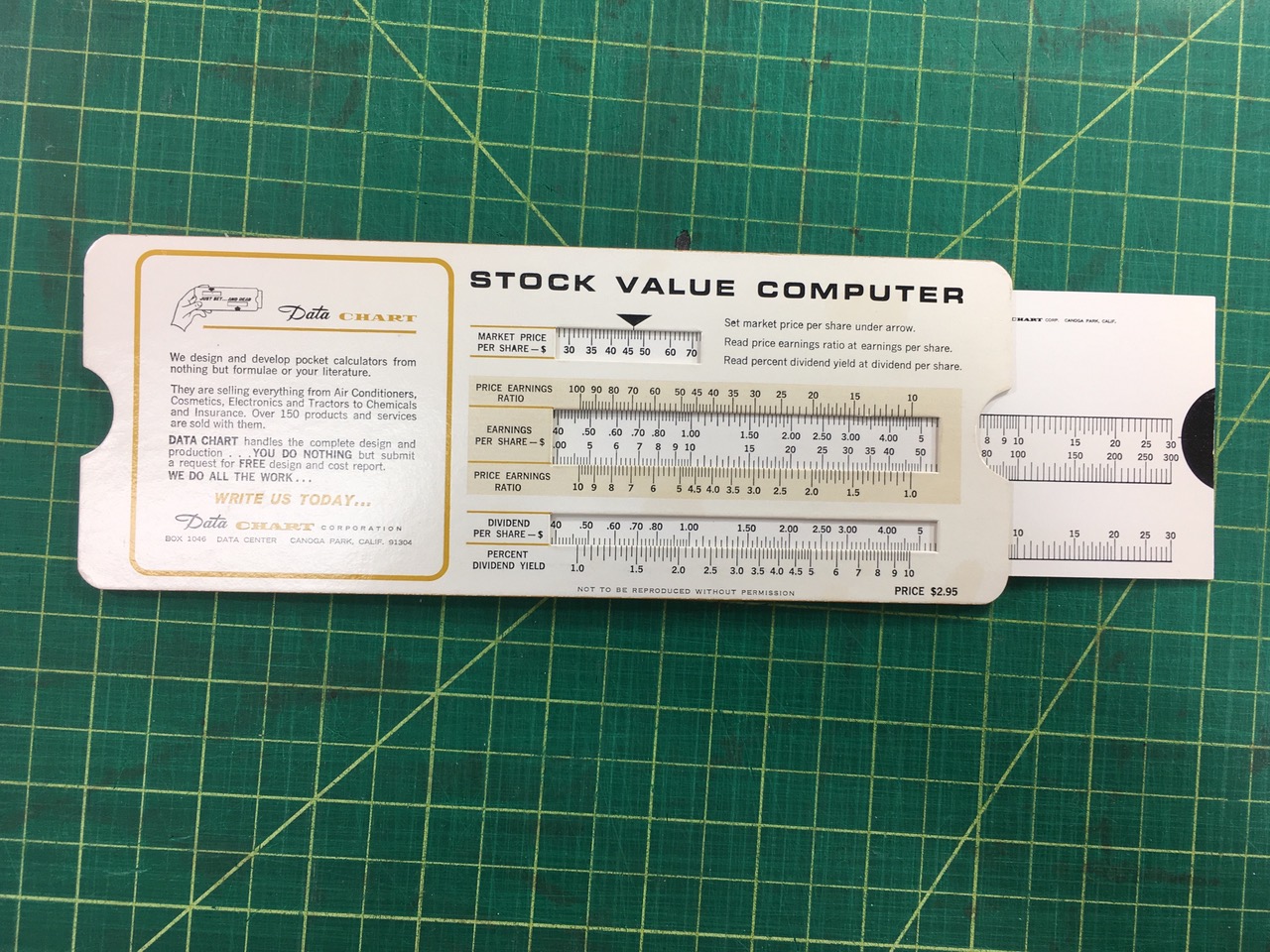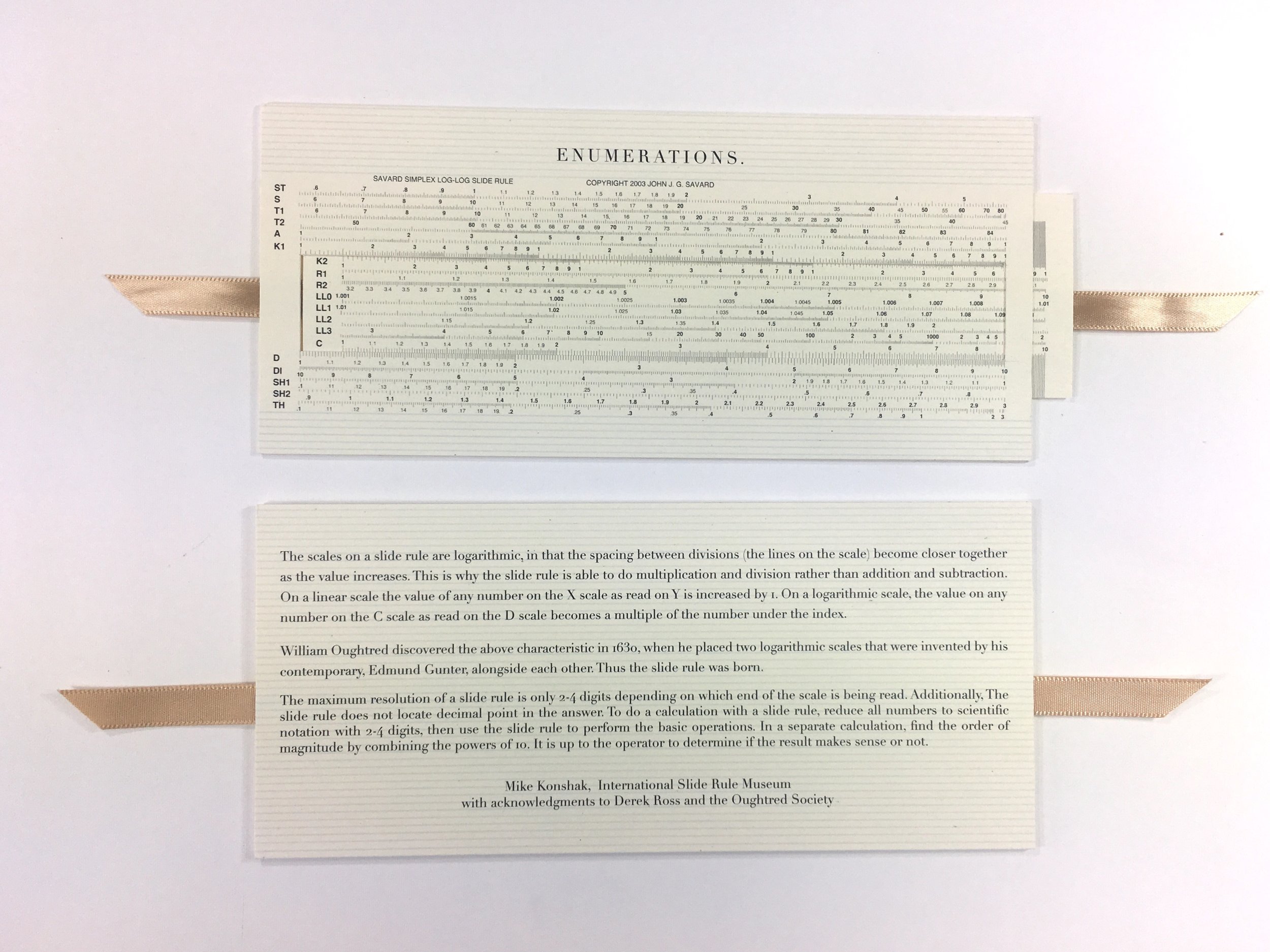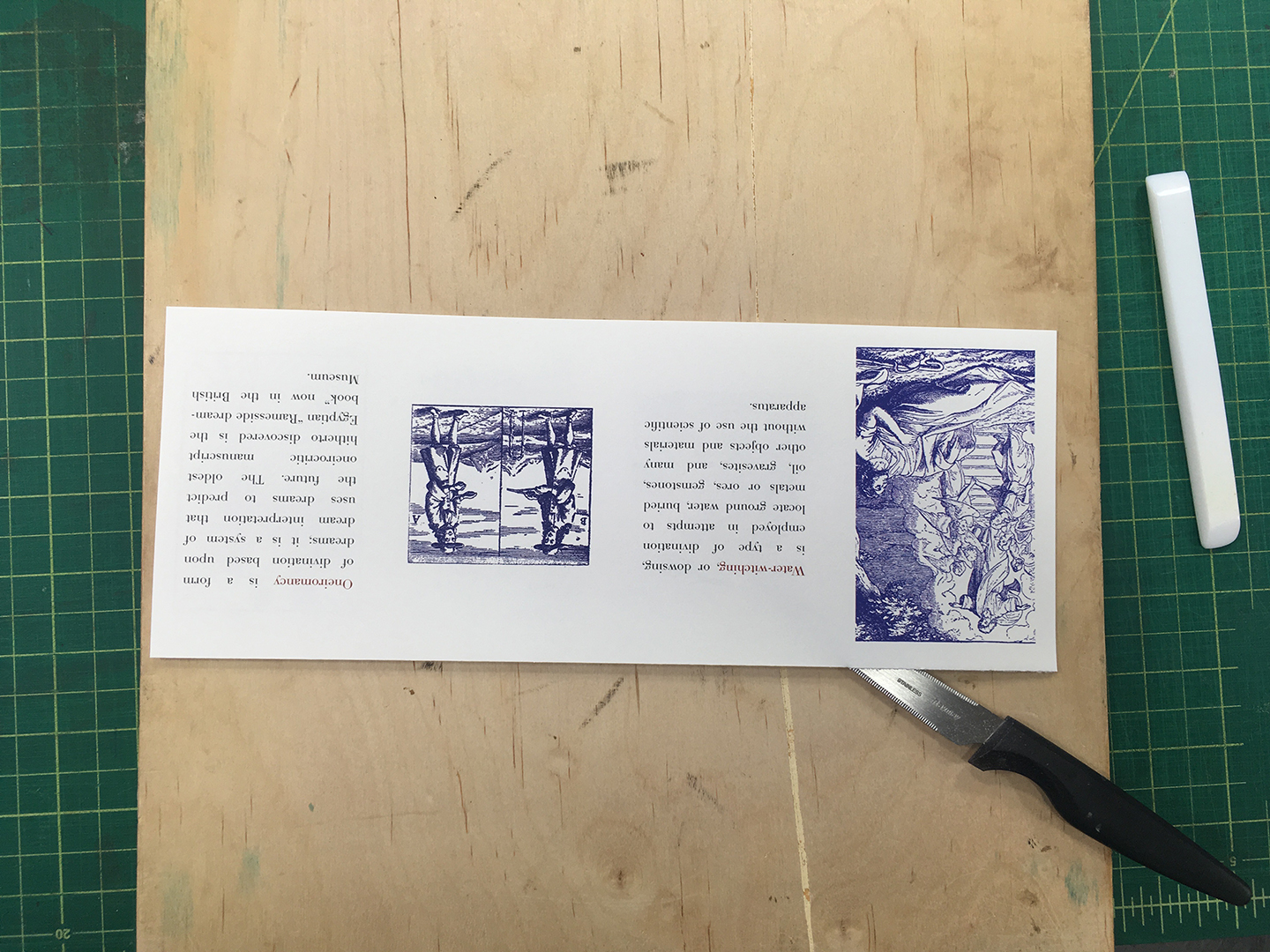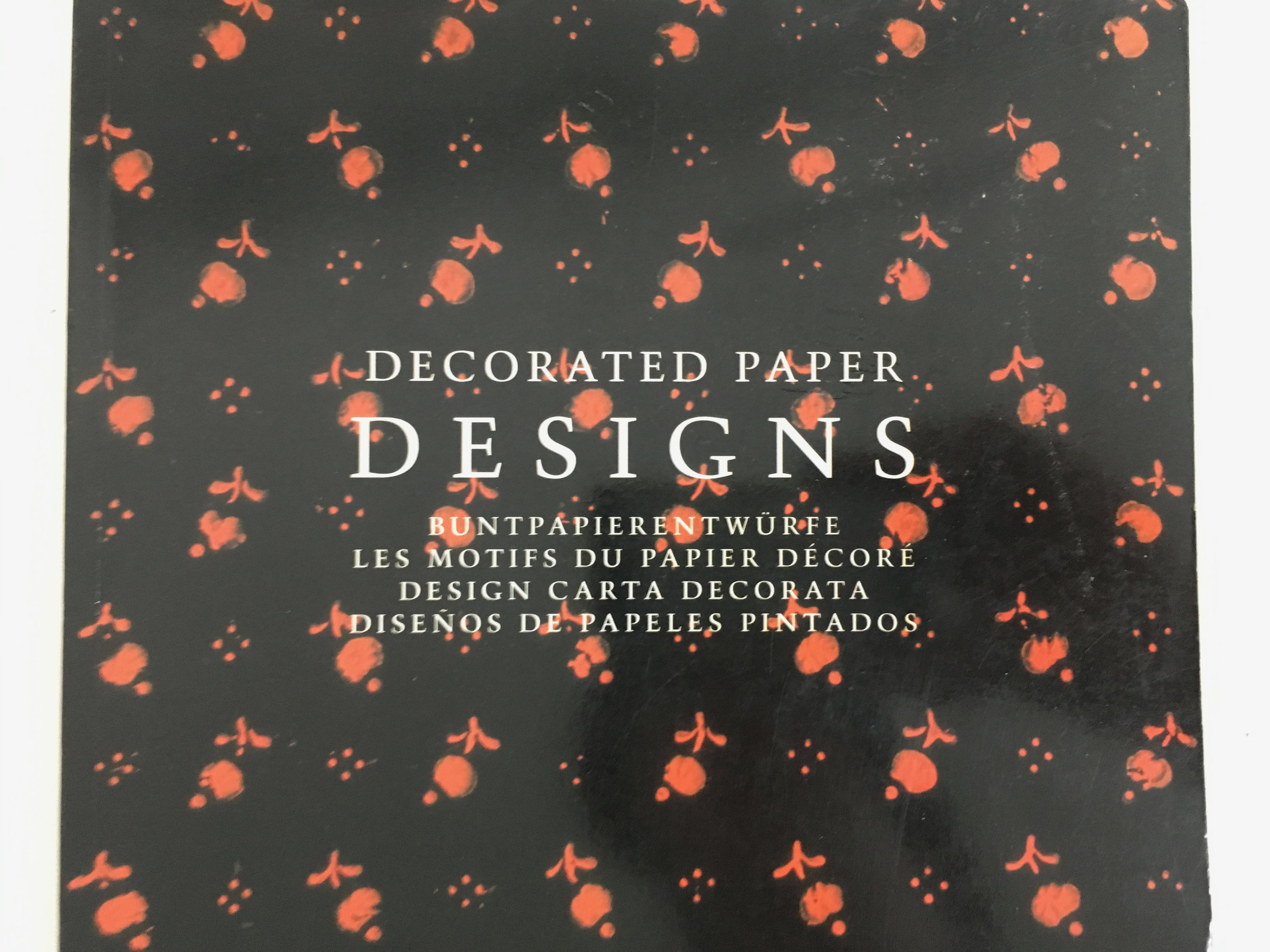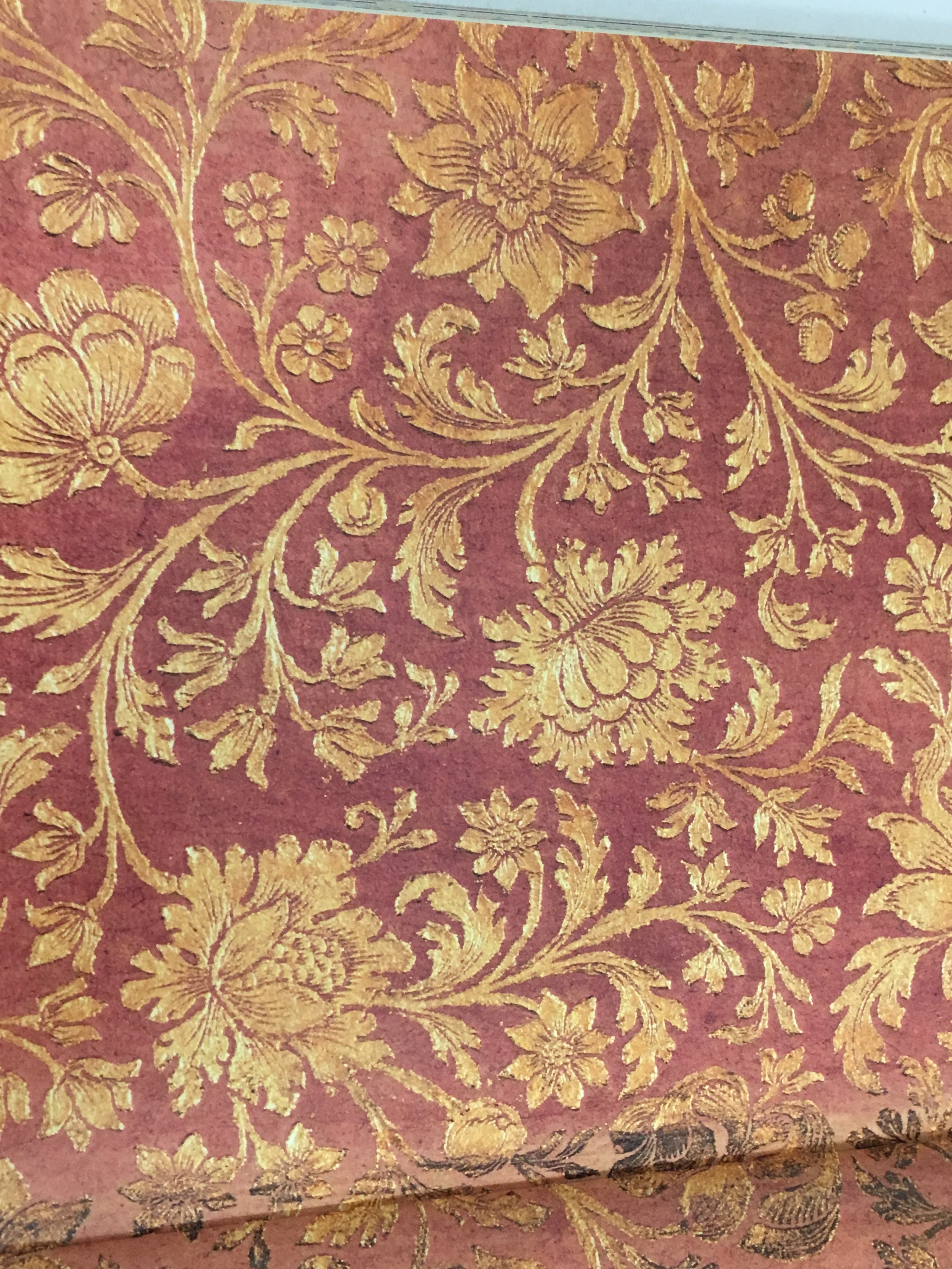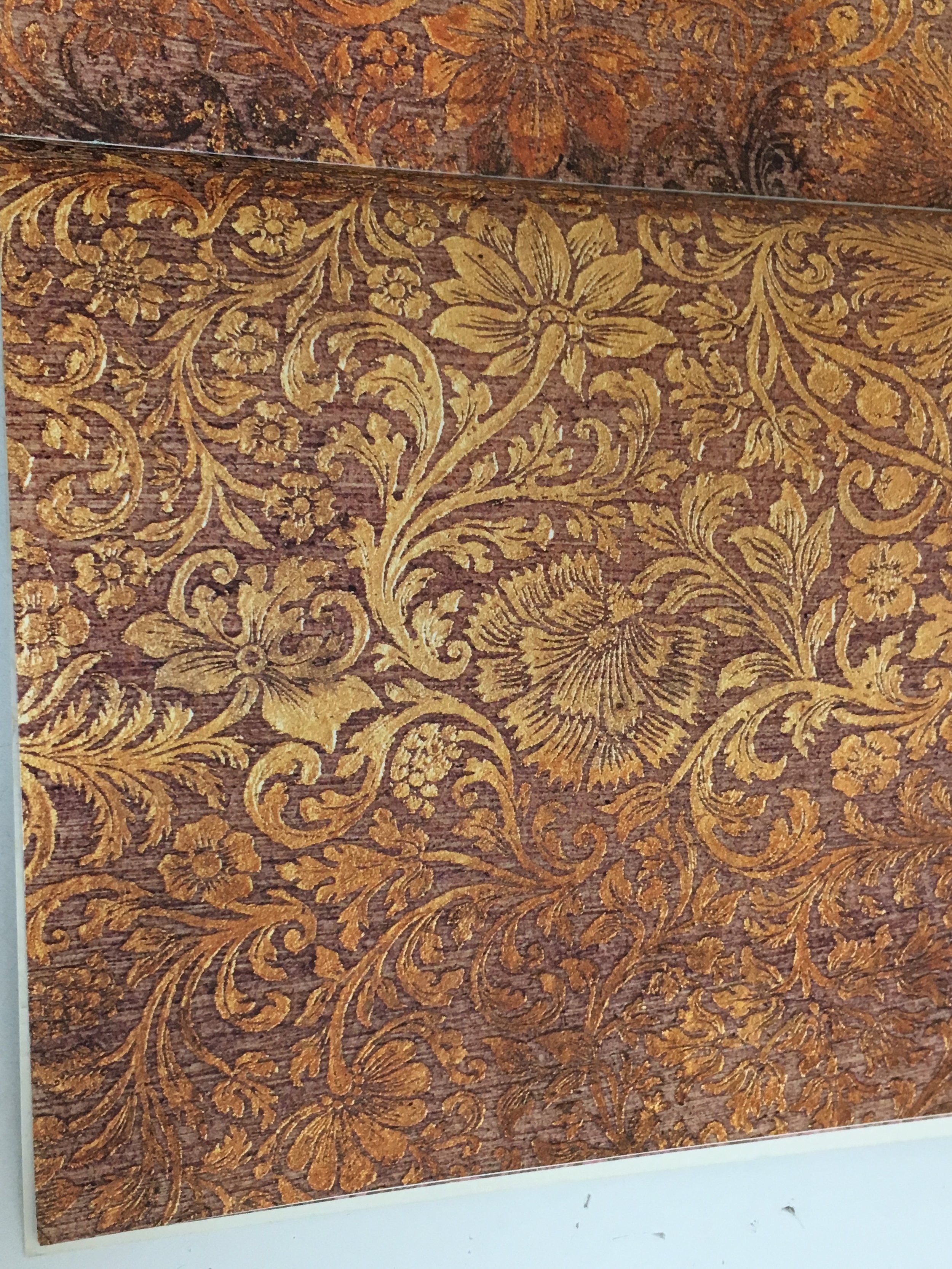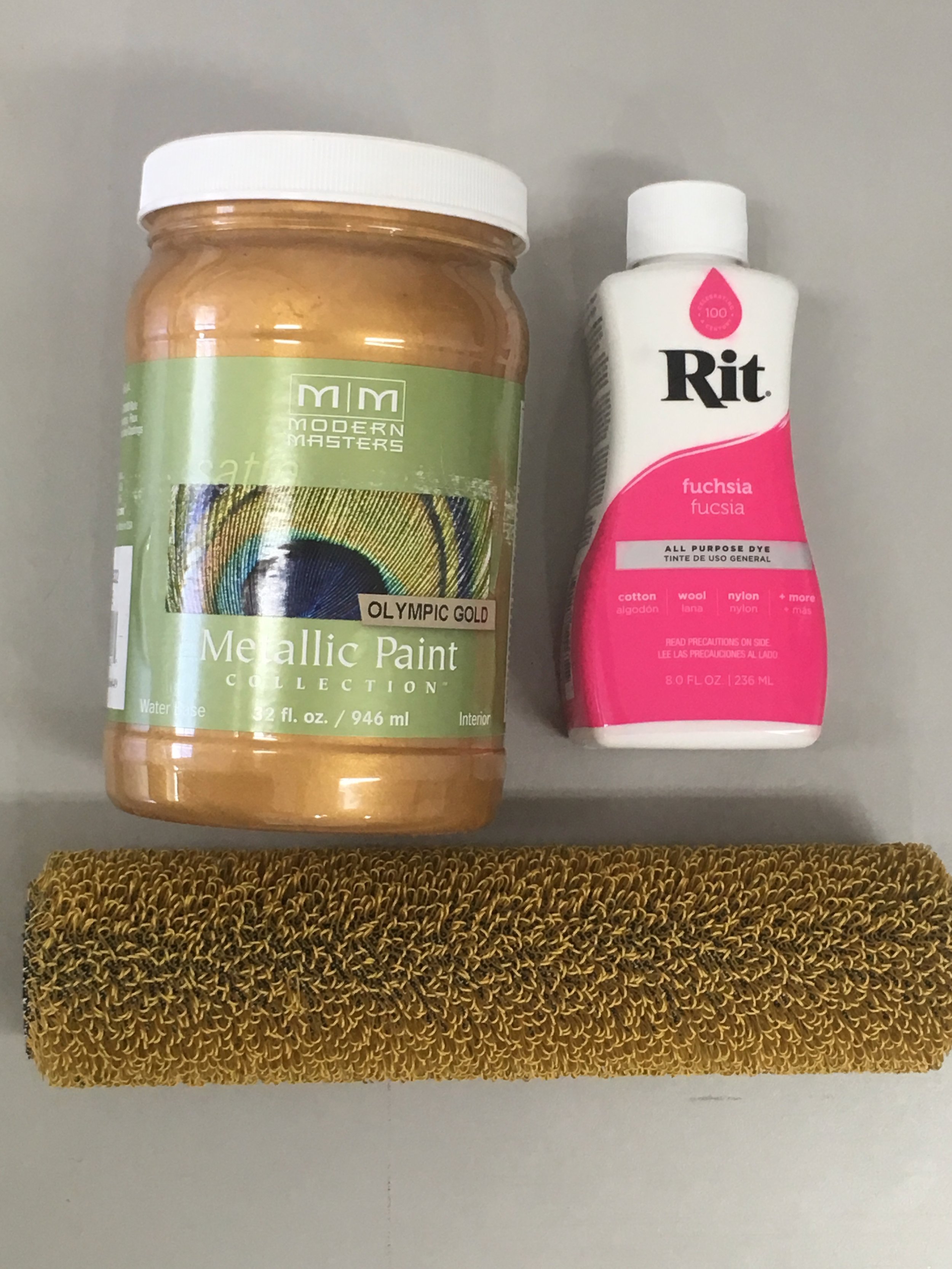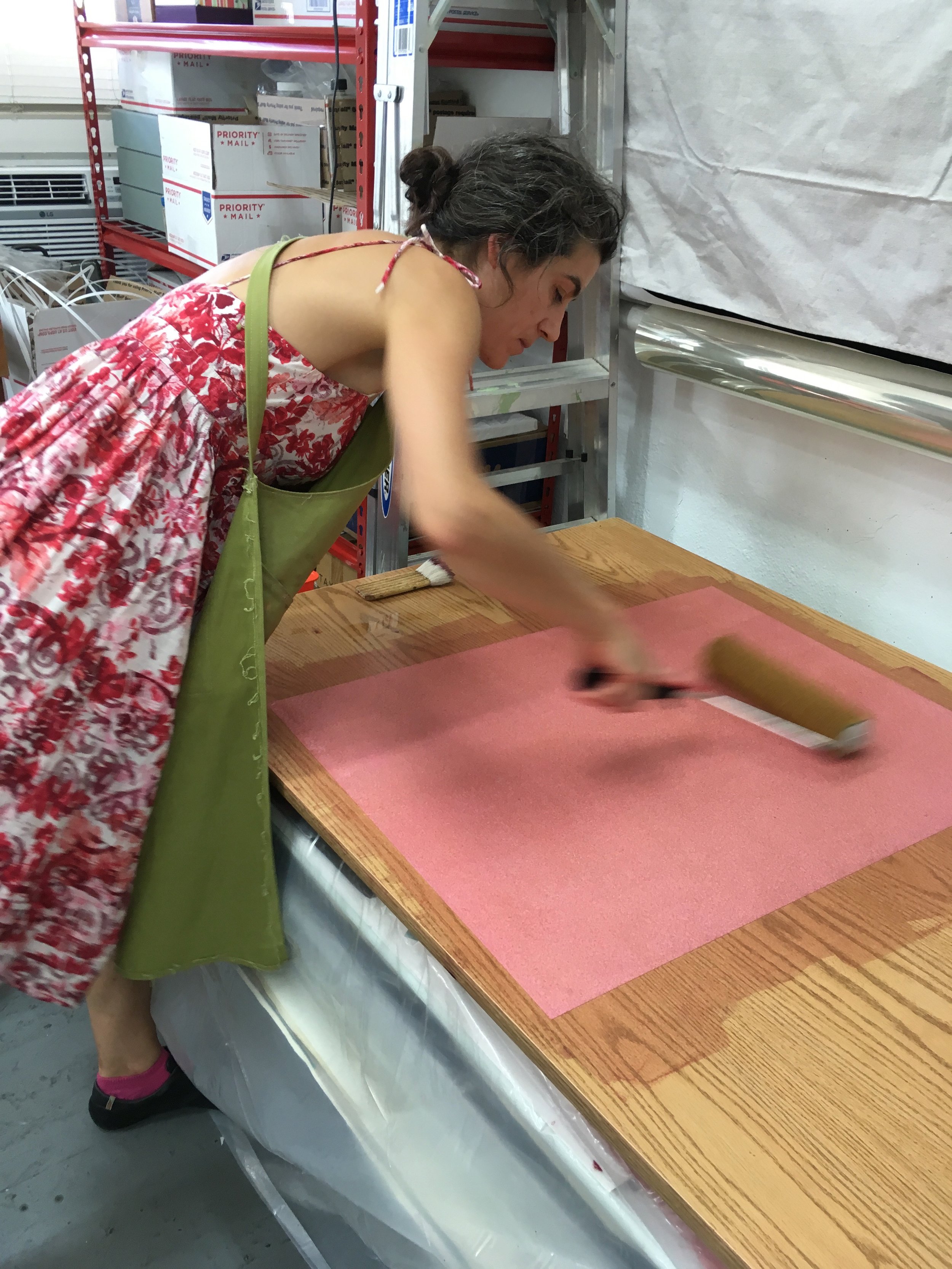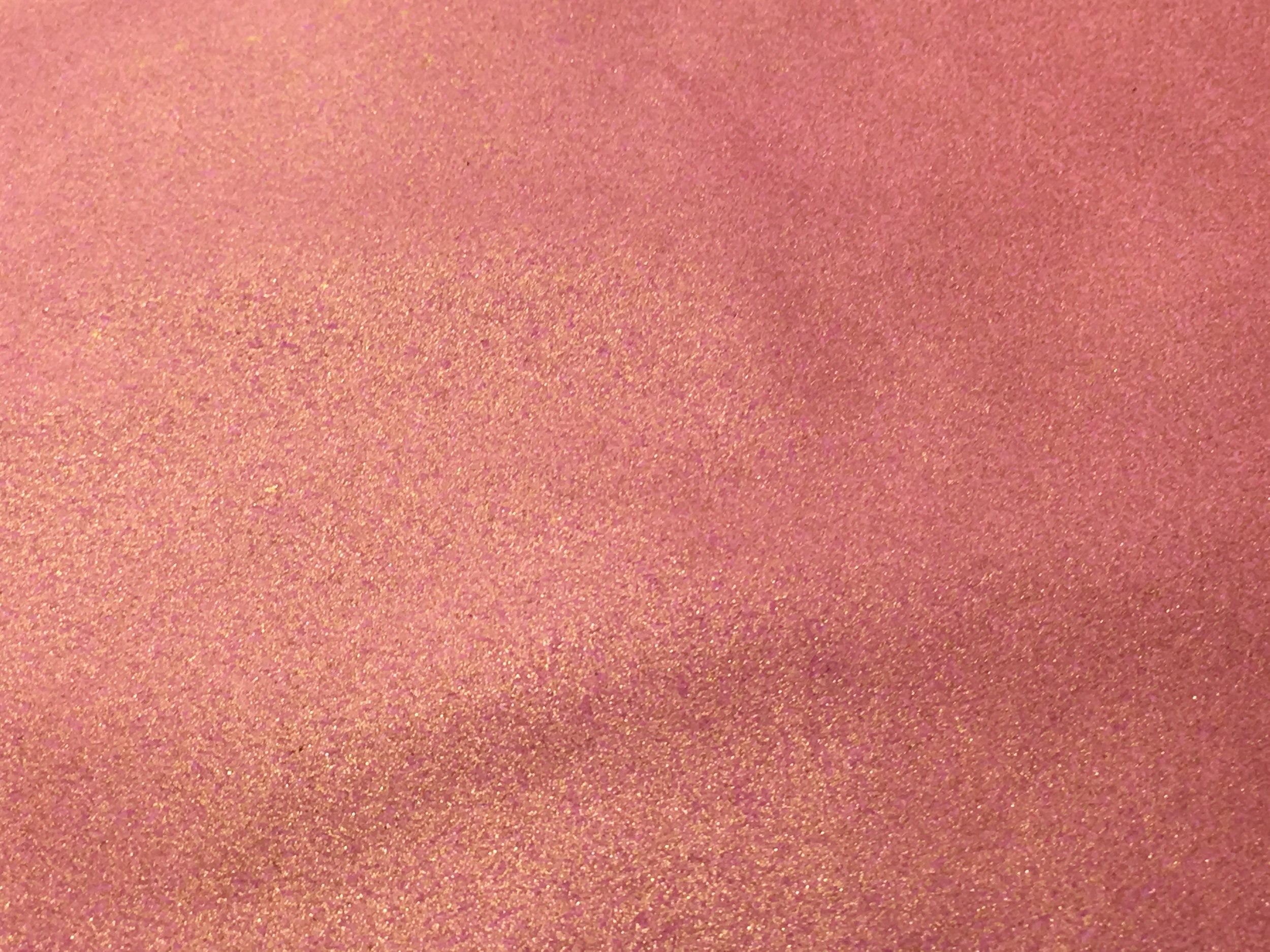Waterways
Stephanie Gibbs
The Seattle Art Museum recently included my artist's book "Between, Among, Within" in an installation on climate change entitled John Akomfrah: Future History.
Notes from the Curator:
The installation, which we have been referring to as "The Vertigo Lounge," takes its name from Akomfrah's three-channel film, Vertigo Sea (2015), that explores the ocean's beauty in our current moment on the verge of climate crisis. In this installation, which is situated in the final gallery of the exhibition, we have included several artist's books that address or reference climate change, a book shelf of climate- and Akomfrah-related titles, a short film about the herring spawn in Sitka, AK, and an interactive element that encourages visitors to record their ideas about ways to save the planet.
The exhibition and installation opened in February, but was closed in March due to the coronavirus pandemic. In lieu of this, the curators of the Akomfrah exhibition are going to do a recorded presentation for SAM at the end of July. That link will be provided as it becomes available.
The museum requested that I provide additional information about the process of creating this book. The specific questions were:
Why did you decide to focus your work on water/water scarcity?
Tell us about the process of making Between, Among, Within. How did you decide on the images?
What do you want a reader to take away from the work?
Since the COVID 19 pandemic, have you thought about this work in a different way?
The following reflections are on the creation, intention, philosophy, and evolution of thinking as pertains to my artist’s book, Between, Among, Within, which was created in 2016 using new research and re-incorporating prior work.
Why did you decide to focus your work on water/water scarcity?
In all of the places that I have lived, I’ve been keenly interested in the interplay between systems for sustaining the delicate balance between human life and environmental balance. Water is a particularly noteworthy barometer for how humans view resources. Water, itself, cannot be created or destroyed. It evaporates; it forms clouds; it rains. It falls into the seas; it falls on land; it absorbs into aquifers. Humans dig wells, then dig deeper wells, then drill into aquifers, then use the water from aquifers without considering the recharging period for water to leech back into the underground system. In Texas, where I grew up, water is a privately owned commodity, like oil or stone. Entire towns in Massachusetts were in protracted legal fights with the Coca-Cola company about losing their water to bottling plants; inevitably, as corporations have deeper financial resources than small towns, the towns run out of money to continue to the fight. Internationally, the problem is even worse.
When I was living in Boston, the city was reconstructing Washington Blvd (which ran through my neighborhood): part of the public works project was replacing the original water pipes of the city, hollowed out logs. After I moved to western Massachusetts, I learned that all of the water consumed in Boston came from flooding several towns in the central part of the state in order to create the Quabbin Reservoir. Entire communities were destroyed, families forcefully relocated, and a public works flooding project engineered in order to provide for “the greater good.” They didn’t even de-construct the towns: when the water level in the reservoir drops, rooftops of the buildings can still be seen, and the original roads have been left as restricted access hiking paths. The politics of the use policies of the Quabbin were equally perplexing. No swimming, no kayaking, but motorboats were fine. Which is going to pollute public drinking water more: a gas powered motorboat or a hand powered canoe? Which has more political power: sportsmen or kayakers?
In 2015, I relocated my home and studio from rural western Massachusetts to central Los Angeles. The first thing that I noticed was how parched the air was: the pervasive dryness was a genuine shock. The state was coming off of a prolonged drought; the reservoirs were emptied or being cover in floating black balls to prevent evaporation; the city was aggressively paying residents to tear out water-hungry lawns and emphasize native, drought-tolerant plants. I felt guilty if it took longer than three minutes to shower. I washed dishes in as little water as possible. When working, I had to completely re-calculate the moisture content of my glue and working time. Projects dried faster, glue dried faster, paper was more brittle, leather reacted differently.
None of this should have been a surprise. I moved to California partly to be in a drier climate. I grew up in Texas, where summer temperatures regularly reach above a hundred, and I have childhood memories of summer droughts in Texas in the 1980s, with watering restrictions and fireworks regulations. I knew that Los Angeles was experiencing an historic drought; I knew that water levels in the Colorado River were so low that the river no longer flowed to the Pacific Ocean; I knew about arid climates and dry seasons. But knowing and experiencing are two entirely different things; I suddenly felt the lack of water, in a way I never had before. The situation in Los Angeles, an arid city reliant on water from the mountains, a city whose boundaries have been shaped with annexed land in order to secure water rights, has been illustrated in the movie “Chinatown,” which, while not a documentary, shows the extreme powers at play in the situation. I watched as the Silver Lake reservoir was emptied; as wealthy homeowners fought to have it re-filled instead of an empty concrete basin (“eyesore”); as a water-bottling company donated thousands of gallons of “expired” bottled water to refill the reservoir. This perverts the water cycle to: rainfall in the mountains; bottling by a private company; donation of water as an aesthetic accessory to wealthy neighborhoods.
And I live in an active earthquake zone. Through all this, I have approximately ten gallons of water squirreled away around my apartment. I check it annually and replace it every two years. I hope I never need to rely upon it. I’m terrified that I will.
Tell us about the process of making Between, Among, Within. How did you decide on the images?
The pastepapers were created in the summer of 2009 for an unrelated and uncompleted artist’s book edition about language and omission. Two editions of the pastepapers were made: indigo pigment in paste on white (machine, western) paper, and indigo pigment in paste on black Japanese paper. Both of these variations are represented in the final Between, Among, Within project. After finishing the prototype, the pastepapers were put into storage and the project languished.
When I began work on the project that became Between, Among, Within, I started by going through my archive of unused project pieces, and separating out those that I thought could be meaningfully re-imagined as new pieces. Looking over the pastepapers, I drew up a list of visual metaphors: flying buttresses, cathedrals, rivers, bridges. Then I began to look for imagery that magnified the interpretations of the patterns. I was thinking quite a lot about waterways, water rights, and rivers; discovering that the entire construction of the system to bring water to the city of New York from upstate had been photo-documented was exciting. I would have preferred to use images that more specifically related to a place that I lived; but I could not find comparable imagery for California, Texas, or Massachusetts.
The photographs were sourced from the New York Public Library historic photography collection, illustrating the construction of the water supply system to transport water from upstate (the Catskill Mountains) to the City in the early years of the twentieth century (1917/1928). What I liked about these photographs was not only the architectural shape of the scaffolding, tunnels, and bridges, but how much they emphasized the human element of the construction. There are men with shovels, men with rail cars, men working. The individual stories of these men have been lost to time: I doubt any statistics were kept as to how many men died working on the project. Presumably state records would indicate whether they were paid laborers or if prison work gangs were also used; what they were paid; how many hours per day and days per week they had to work. This was before the era of the union: and while the resulting structures may be both beautiful and useful, there is rarely an accounting of the human cost of the creation. As a bookbinder, I am deeply attuned to the presence of hand-work towards a completed product; as I consider the history of the industrial revolution and the changing attitudes towards “labor” and “work”, I look for the visible residue of human hands on construction projects of a massive scale.
The inclusion of a map showing the natural path of the waterway was equally integral to the project. Water flows from high elevations to lower elevations; water flows from the mountains to the sea. However, it does so in a pattern that, quite literally, meanders, creating oxbows, eddies, and rapids. The end result of the path may be the same, but the entire ecosystem and shape created by the will of the water is distinctly different. Nature has a path, and it is not the road of man.
The sine curve chosen for the cover stamping, in lieu of lettering the title, provides a geometrical metaphor for rising, falling, and cycling; not the movement of wave theory, but the back and forth as an equilibrium is sought.
What do you want a reader to take away from the work?
I do not have any particular expectations for the reader of the work. Some will find meaning in the shape of the pastepaper patterns; others will be fascinated by the photographs. Many readers miss the map component altogether. I would like the pastepapers to function as the connecting waterway through the construction of the systems, flowing the reader downstream, and providing pauses between the images for the mind to reset before it take on new information. I’d like the readers to think about pathways and to think about intentions, and to think about the layers of costs, human and environmental, of shaping nature and of supporting human life.
Since the COVID 19 pandemic, have you thought about this work in a different way?
Since the COVID-19 pandemic, and the racial justice protests that have accompanied it, I’ve been thinking about the distinctly American philosophies that underpin the way we treat our environment, the way we treat our fellow humans, and the role that we allow the government to play in enacting these beliefs. The complete re-routing of a watershed system across a state, an “inconvenience” to a few and a rebuilding of nature, was deemed essential by urban planners in the early twentieth century. There was no small amount of loss associated with destroying entire communities and changing the flow of rivers, but the need to support human life on a larger scale was deemed of higher importance. The system pictured in these photographs predates the 1918 flu,and the expansion of the system predates the 1930s depression; this serves as an indicator for what governments can accomplish when the will power exists. This was all done on a state level, with federal funds and support.
What I see now is a system where there is no political will to take care of the lifeblood of a population. There are National Guardsmen with machine guns posted underneath the windows of my studio. Last week the intersection under my windows was full of tactical police in riot gear rerouting peaceful protestors using aggressive means. I moved all of my clients’ work out of my studio and to my apartment because I’m terrified of arson. I’m also terrified of tear gas.
Now imagine a different outcome. Look at the political will that created lakes, that rerouted rivers, to provide water to cities across America. Imagine if instead of insufficient $1200 one-time allowances from the government, people were given an amount of money that actually covered the cost of rent. Imagine if instead of publicly traded companies scooping government loans, that money actually went to the many small businesses and independent contractors who have had difficulties getting their applications approved. Imagine if instead of billionaires and congressmen selling off stocks at the start of the pandemic that grocery store, warehouse, and slaughterhouse workers were paid not a minimum wage but a living wage. Imagine if in the middle of a major medical pandemic people’s health insurance wasn’t tied to their employer, as businesses are laying off employees and closing. Imagine if instead of police officers being funded to purchase military gear that medical workers had all the PPE they required to not die while saving lives.
We live in a country with great resources and great willpower. We have the ability to envision a different outcome, to plan the pathway to achieve that goal, and to put forth the effort for the vision to become a reality. Imagine if physical health, economic security, and racial justice was given the same importance as water.


